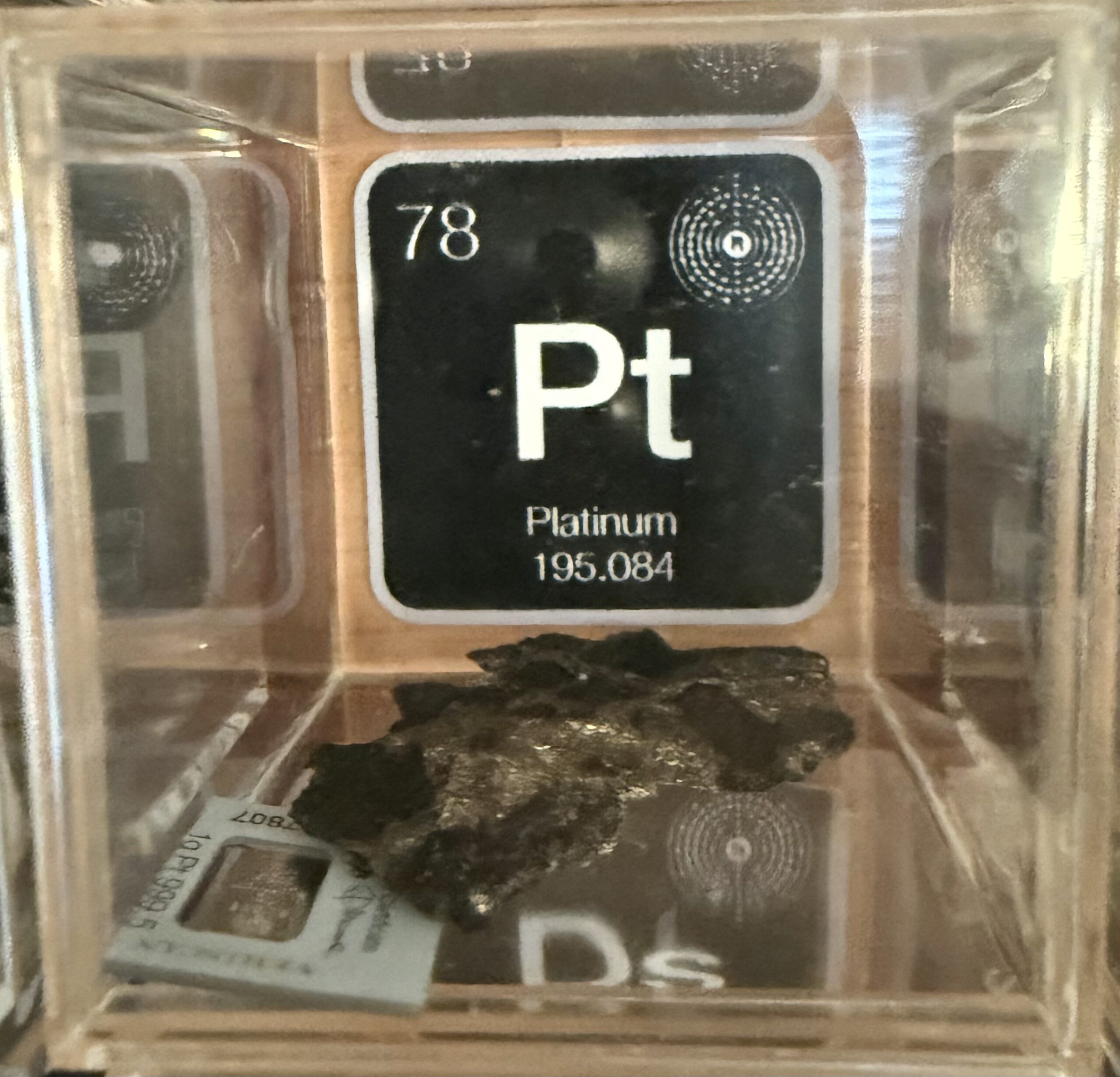Atomic Number: 78
Atomic Mass: 195.08

Platinum, often associated with luxury and prestige, is much more than a symbol of wealth. Its unique physical and chemical properties have made it a vital element in various industries, from healthcare to technology. But how did platinum come into our lives, and how do we use it today? Let’s dive into its fascinating journey.
The Discovery of Platinum
Platinum’s history dates back thousands of years, though it wasn’t formally recognized by European scientists until the 18th century. The metal was first encountered by pre-Columbian South American civilizations, who used it in artifacts and jewelry as far back as 1200 BCE. However, it wasn’t until the Spanish encountered the metal in Colombia in the 16th century that it came into broader knowledge.
Early Spanish explorers, particularly those looking for gold, were confused by this strange, silver-like metal that seemed to contaminate their gold deposits. They referred to it dismissively as “platina,” meaning “little silver.” It wasn’t until 1735 that the first scientific study of platinum was conducted by Spanish scientist Antonio de Ulloa. Ulloa, while in Colombia, recognized platinum’s distinct qualities, marking the start of its official discovery in the Western world.
Platinum remained rare and relatively underappreciated until the late 18th century, when English chemist William Hyde Wollaston successfully isolated and purified the metal in 1803. His work opened the door for the industrial applications of platinum, and it quickly became a metal of immense scientific and commercial interest.
Properties of Platinum
The element is a dense, malleable, ductile metal with excellent resistance to corrosion. It is part of the platinum group metals (PGMs), which includes other precious metals like palladium, rhodium, and osmium. Its resistance to tarnish and wear makes it ideal for both industrial and ornamental uses.
Modern-Day Uses of Platinum
In today’s world, platinum is far more than just a component of jewelry and luxury items. Its unique properties make it invaluable across various sectors:
1. Catalysts in Automotive and Industrial Processes
One of the most critical uses of platinum is in catalytic converters in cars. These devices convert harmful gases from engine exhaust into less toxic pollutants, reducing the environmental impact of gasoline and diesel vehicles. Platinum’s catalytic properties also make it useful in the production of nitric acid, fertilizers, and various chemicals.
2. Jewelry
Despite its industrial applications, platinum remains a symbol of luxury. Its luster, durability, and hypoallergenic properties make it a popular choice for high-end jewelry, especially engagement rings and watches. Platinum’s rarity and beauty continue to keep it in demand in this sector.
3. Healthcare
Platinum compounds play a significant role in medicine, particularly in cancer treatments. Platinum-based drugs, such as cisplatin, are used in chemotherapy to treat various cancers, including testicular, ovarian, and lung cancer. These drugs work by binding to the DNA in cancer cells, disrupting their ability to divide and grow.
4. Electronics and Technology
Platinum is widely used in electronics due to its excellent conductivity and resistance to corrosion. It is found in electrical contacts, electrodes, and hard disk drives. It is also used in the production of sensors and medical devices, including pacemakers and hearing aids.
5. Renewable Energy
In the push towards sustainable energy, platinum plays a crucial role in fuel cells. Fuel cells, which convert chemical energy into electricity, use platinum as a catalyst to split hydrogen molecules into protons and electrons. This technology is particularly promising for clean energy production, especially in hydrogen-powered vehicles.
Platinum’s Future
As the world continues to innovate, platinum’s role in industries like clean energy and advanced healthcare is expected to grow. With increasing focus on reducing emissions and developing sustainable technologies, the demand for platinum in fuel cells and other green technologies could expand significantly.
Moreover, the rise of electric vehicles (EVs) might seem like a challenge to platinum demand due to reduced reliance on catalytic converters. However, platinum-based fuel cells offer an alternative path for future energy solutions, suggesting that platinum’s versatility will keep it in high demand.
Conclusion
From its humble beginnings as “little silver” found in the streams of Colombia to its critical role in modern-day industries, platinum has proven to be one of the most valuable metals in history. Its discovery marked a turning point in science and industry, and today it continues to power innovation in fields ranging from healthcare to renewable energy. Whether in your car’s catalytic converter or as part of your most treasured jewelry, platinum is a silent workhorse of the modern world, ensuring cleaner air, healthier lives, and a more sustainable future.
 using WordPress and
using WordPress and
Comments are closed